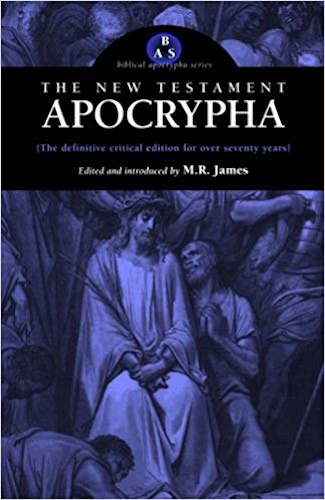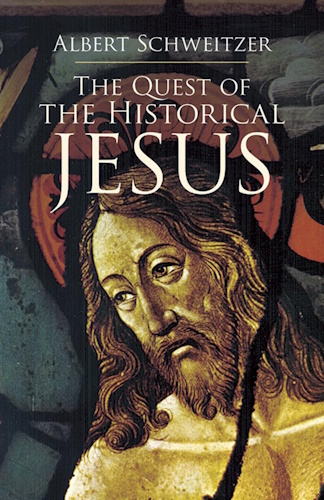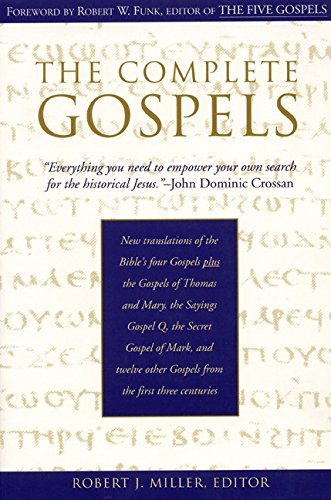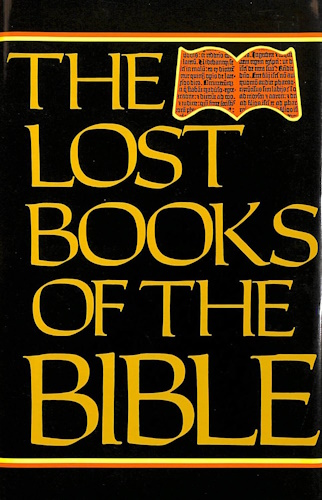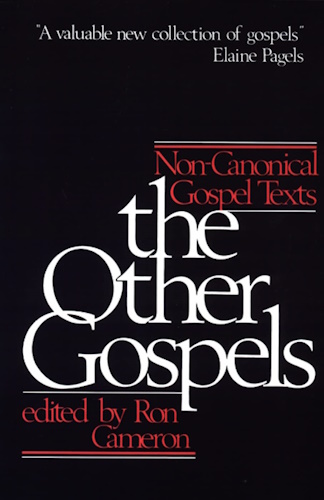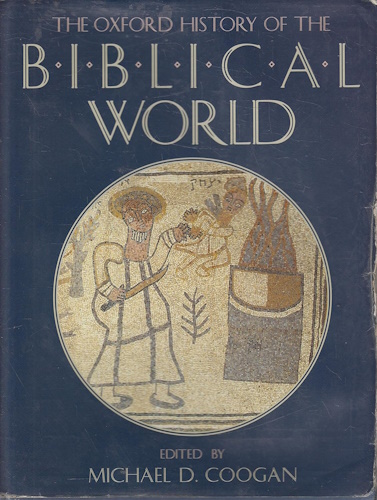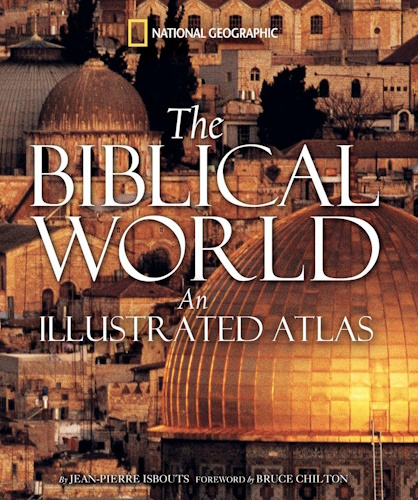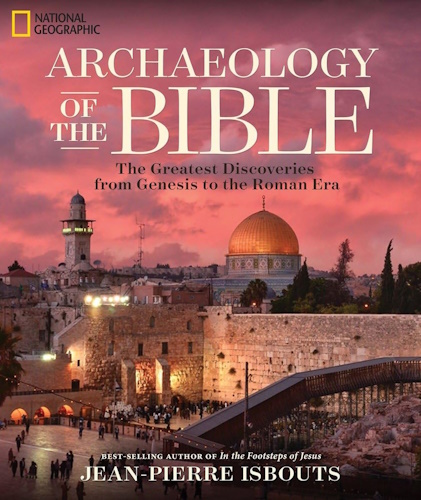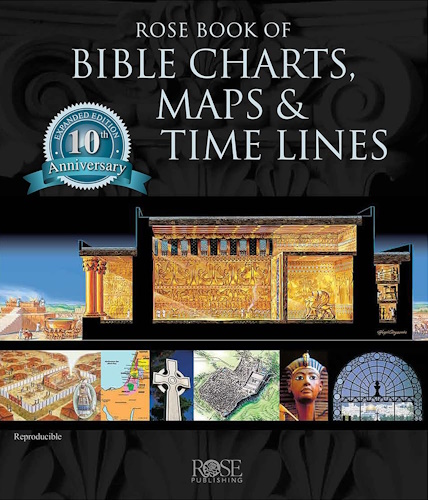
Apocalypse Of Thomas
Introduction
The emergence of this book has been recent. The Gelasian Decree condemns the book 'called the Revelation of Thomas' as apocryphal, and that was all that was known of it. In 1908 a quotation in the Berlin MS. (eighth-ninth century) of Jerome's Chronicle was noticed by Dr. Frick. At the eighteenth year of Tiberius, the manuscript has this note:
In a certain apocryphal book, said to be of Thomas the apostle it is written that the Lord Jesus told him that from his ascension into heaven to his second advent the time comprised is nine jubilees.
This does not appear in any of the published texts. Already in 1907 F. Wilhelm had printed, in his Deutsche Legenden und Legendare, a text from a Munich MS. which attracted little attention, but was in fact the lost Apocalypse, or part of it.
In the same year E. Hauler showed that a leaf of a fifth-century palimpsest at Vienna -the same that contains a leaf of the Epistle of the Apostles- was a fragment of this book. Professor E. von Dobschutz had, before this, begun making preparation for an edition of the Apocalypse based on manuscripts at Munich and Rome which has not yet appeared. In the Journal of Theological Studies for 1910 I printed the beginning of the book from a Verona MS. (of eighth century). Maffei had noticed this, and in 1755 Dionisi had printed it in a forgotten volume. In 1911 Dom Bihlmeyer printed another 'uninterpolated' text from Munich in the Revue Benedictine. Yet more: in 1913 Max Forster (Studien z. engl. Phlilol.: Der Vercelli-Codex) showed that the fifteenth sermon in the famous Anglo-Saxon MS. at Vercelli is an Old English version of this Revelation; that a Hatton MS. and the Blickling Homilies also contain matter drawn from it: and that a shortened Latin form is to be found in a dialogue printed by Suchier (L'Enfant sage, 1910, p. 272). Lastly, there are quotations from it in some odd -I think Irish- homilies in a Reichenau MS. at Carlsruhe, printed by Domde Bruyneas 'Apocryphes Priscillianistes' in the Revue Bened., 1907.
There is, then, a quantity of material which we shall look to Professor Dohschutz to co-ordinate. Latin appears to have been the original language, and the data of the fuller text point to the days of Arcadius and Honorius. How much earlier the shorter text may be it is not easy to say: and I would not commit myself to the assertion that there is not a Greek document at the back of that.
A. Verona fragment (eighth century) and Wilhelm's text (Munich Clm. 4585, ninth century).
Here beginneth the epistle of the Lord unto Thomas.
Hear thou, Thomas, the things which must come to pass in the last times: there shall be famine and war and earthquakes in divers places, snow and ice and great drought shall there be and many dissensions among the peoples, blasphemy, iniquity, envy and villainy, indolence, pride and intemperance, so that every man shall speak that which pleaseth him. And my priests shall not have peace among themselves, but shall sacrifice unto me with deceitful mind: therefore will I not look upon them. Then shall the priests behold the people departing from the house of the Lord and turning unto the world (?) and setting up (or, transgressing) landmarks in the house of God. And they shall claim (vindicate) for themselves many [things and] places that were lost and that shall be subject unto Caesar (?) as also they were aforetime: giving poll-taxes of (for) the cities, even gold and silver and the chief men of the cities shall be condemned (here Verona ends: Munich continues) and their substance brought into the treasury of the kings, and they shall be filled.
For there shall be great disturbance throughout all the people, and death. The house of the Lord shall be desolate, and their altars shall be abhorred, so that spiders weave their webs therein. The place of holiness shall be corrupted, the priesthood polluted, distress (agony) shall increase, virtue shall be overcome, joy perish, and gladness depart. In those days evil shall abound: there shall be respecters of persons, hymns shall cease out of the house of the Lord, truth shall be no more, covetousness shall abound among the priests; an upright man (al. an upright priesthood) shall not be found.
On a sudden there shall arise near the last time a king, a lover of the law, who shall hold rule not for long: he shall leave two sons. The first is named of the first letter (A, Arcadius), the second of the eighth (H, Honorius). The first shall die before the second (Arcadius died in 408- Honorius in 423).
Thereafter shall arise two princes to oppress the nations under whose hands there shall be a very great famine in the right-hand part of the east, so that nation shall rise up against nation and be driven out from their own borders.
Again another king shall arise, a crafty man (?), and shall command a golden image of Caesar (?) to be made (al. to be worshipped in the house of God), wherefore (?) martyrdoms shall abound. Then shall faith return unto the servants of the Lord, and holiness shall be multiplied and distress (agony) increase. The mountains shall the comforted and shall drop down sweetness of fire from the facet, that the number of the saints may be accomplished.
After a little space there shall arise a king out of the east, a lover of the law, who shall cause all good things and necessary to abound in the house of the Lord: he shall show mercy unto the widows and to the needy, and command a royal gift to be given unto the priests: in his days shall be abundance of all things.
And after that again a king shall arise in the south part of the world, and shall hold rule a little space: in whose days the treasury shall fail because of the wages of the Roman soldiers so that the substance of all the aged shall be commanded (to be taken) and given to the king to distribute.
Thereafter shall be plenty of corn and wine and oil, but great dearness of money, so that the substance of gold and silver shall be given for corn, and there shall be great dearth.
At that time shall be very great rising (?) of the sea, so that no man shall tell news to any man. The kings of the earth and the princes and the captains shall be troubled, and no man shall speak freely (boldly). Grey hairs shall be seen upon boys, and the young (?) shall not give place unto the aged.
After that shall arise another king, a crafty man, who shall hold rule for a short space: in whose days there shall be all manner of evils, even the death of the race of men from the east even unto Babylon. And thereafter death and famine and sword in the land of Chanaan even unto (Rome?). Then shall all the fountains of waters and wells boil over (?) and be turned into blood (or, into dust and blood). The heaven shall be moved, the stars shall fall upon the earth, the sun shall be cut in half like the moon, and the moon shall not give her light. There shall be great signs and wonders in those days when Antichrist draweth near. These are the signs unto them that dwell in the earth. In those days the pains of great travail shall come upon them. (al. In those days, when Antichrist now draweth near, these are the signs. Woe unto them that dwell on the earth; in those days great pains of travail shall come upon them.) Woe unto them that build, for they shall not inhabit. Woe unto them that break up the fallow, for they shall labour without cause. Woe unto them that make marriages, for unto famine and need shall they beget sons. Woe unto them that join house to house or field to field, for all things shall be consumed with fire. Woe unto them that look not unto (?) themselves while time alloweth, for hereafter shall they be condemned for ever. Woe unto them that turn away from the poor when he asketh.
[Here is a break: the text goes on: For I am of the high and powerful: I am the Father of all. (al. And know ye: I am the Father most high: I am the Father of all spirits.) This, as we shall see, is the beginning of the older(?) and shorter text, and of the Vienna fragment: only, in the latter, some words now unintelligible precede it: not the words, however, which are in Wilhelm's text. I will continue with Wilhelm.]
These are the seven signs the ending of this world. There shall be in all the earth famine and great pestilences and much distress: then shall all men be led captive among all nations and shall fall by the edge of the sword.
On the first day of the judgement will be a great marvel (or, the beginning shall be). At the third hour of the day shall be a great and mighty voice in the firmament of the heaven, and a great cloud of blood coming down out of the north, and great thunderings and mighty lightnings shall follow that cloud, and there shall be a rain of blood upon all the earth. These are the signs of the first day (Monday in the Anglo-Saxon, and so for the other days).
And on the second day there shall be a great voice in the firmament of the heaven, and the earth shall be moved out of its place: and the gates of heaven shall be opened in the firmament of heaven toward the east, and a great power shall be sent belched) forth by the gates of heaven and shall cover all the heaven even until evening (al. and there shall be fears and tremblings in the world). These are the signs of the second day.
And on the third day, about the second hour, shall be a voice in heaven, and the abysses of the earth shall utter their voice from the four corners of the world. The first heaven shall be rolled up like a book and shall straightway vanish. And because of the smoke and stench of the brimstone of the abyss the days shall be darkened unto the tenth hour. Then shall all men say: I think that the end draweth near, that we shall perish. These are the signs of the third day.
And on the fourth day at the first hour, the earth of the east shall speak, the abyss shall roar: then shall all the earth be moved by the strength of an earthquake. In that day shall all the idols of the heathen fall, and all the buildings of the earth. These are the signs of the fourth day.
And on the fifth day, at the sixth hour, there shall be great thunderings suddenly in the heaven, and the powers of light and the wheel of the sun shall be caught away, and there shall be great darkness over the world until evening, and the stars shall be turned away from their ministry. In that day all nations shall hate the world and despise the life of this world. These are the signs of the fifth day.
And on the sixth day there shall be signs in heaven. At the fourth hour the firmament of heaven shall be cloven from the east unto the west. And the angels of the heavens shall be looking forth upon the earththe opening of the heavens. And all men shall see above the earth the host of the angels looking forth out of heaven. Then shall all men flee.
(Here Wilhelm's text ends abruptly.)
B. Bihlmeyer's text, from Munich Clm. 4563 (eleventh to twelfth century, from Benedictbeuren): and the Vienna fragment.
Hear thou, O Thomas, for I am the Son of God the Father and I am the father of all spirits. Hear thou of me the signs which shall come to pass at the end of this world, when the end of the world shall be fulfilled (Vienna: that it pass away) before mine elect depart out of the world. I will tell thee that which shall come to pass openly unto men (or, will tell thee openly, &c.): but when these things shall be the princes of the angels know not, seeing it is now hidden from before them (Vienna adds: at what day the end shall be fulfilled, and some defective clauses).
Then shall there be in the world sharings (participations) between king and king, and in all the earth shall be great famine great pestilences, and many distresses, and the sons of men shall be led captive among all nations and shall fall by the edge of the sword (and there shall be great commotion in the world: Vienna omits). Then after that when the hour of the end draweth nigh there shall be for seven days great signs in heaven, and the powers of the heavens shall be moved.
Then shall there be on the first day the beginning: at the third hour of the day a great and mighty voice in the firmament of heaven and a bloody cloud coming up (down, Vienna) out of the north, and great thunderings and mighty lightnings shall follow it, and it shall cover the whole heaven, and there shall be a rain of blood upon all the earth. These are the signs of the first day.
And on the second day there shall be a great voice in the firmament of heaven, and the earth shall be moved out of its place, and the gates of heaven shall be opened in the firmament of heaven toward the east, and the (smoke of a great fire shall break forth through the gates of heaven and shall cover all the heaven until evening. In that day there shall be fears and great terrors in the world. These are the signs of the second day. Vienna is defective here).
But on the third day about the third hour shall be a great voice in heaven, and the abysses of the earth (Vienna ends) shall roar from the four corners of the world; the pinnacles (so) of the firmament of heaven shall be opened, and all the air shall be filled with pillars of smoke. There shall be a stench of brimstone, very evil, until the tenth hour, and men shall say: We think the time draweth nigh that we perish. These are the signs of the third day.
And on the fourth day at the first hour, from the land of the east the abyss shall melt (so) and roar. Then shall all the earth be shaken by the might of an earthquake. In that day shall the ornaments of the heathen fall, and all the buildings of the earth, before the might of the earthquake. These are the signs of the fourth day.
But on the fifth day at the sixth hour, suddenly there shall be a great thunder in heaven, and the powers of light and the wheel of the sun shall be caught away (MS. opened), and there shall be great darkness in the world until evening, and the air shall be gloomy (sad) without sun or moon, and the stars shall cease from their ministry. In that day shall all nations behold as in a mirror (?) (or, behold it as sackcloth) and shall despise the life of this world. These are the signs of the fifth day.
And on the sixth day at the fourth hour there shall be a great voice in heaven, and the firmament of the heaven shall be cloven from the east unto the west, and the angels of the heavens shall be looking forth upon the earth by the openings of the heavens, and all these that are on the earth shall behold the host of the angels looking forth out of heaven. Then shall all men flee unto the monuments (mountains ?) and hide themselves from the face of the righteous angels, and say: Would that the earth would open and swallow us up! And such things shall come to pass as never were since this world was created.
Then shall they behold me coming from above in the light of my Father with the power and honour of the holy angels. Then at my coming shall the fence of fire of paradise be done away -because paradise is girt round about with fire. And this shall be that perpetual fire that shall consume the earth and all the elements of the world.
Then shall the spirits and souls of all men come forth from paradise and shall come upon all the earth: and every one of them shall go unto his own body, where it is laid up, and every one of them shall say: Here lieth my body. And when the great voice of those spirits shall be heard, then shall there be a great earthquake over all the world, and by the might thereof the mountains shall be cloven from above and the rocks from beneath. Then shall every spirit return into his own vessel and the bodies of the saints which have fallen asleep shall arise.
Then shall their bodies be changed into the image and likeness and the honour of the holy angels, and into the power of the image of mine holy Father. Then shall they be clothed with the vesture of life eternal, out of the cloud of light which hath never been seen in this world; for that cloud cometh down out of the highest realm of the heaven from the power of my Father. And that cloud shall compass about with the beauty thereof all the spirits that have believed in me.
Then shall they be clothed, and shall be borne by the hand of the holy angels like as I have told you aforetime. Then also shall they be lifted up into the air upon a cloud of light, and shall go with me rejoicing unto heaven, and then shall they continue in the light and honour of my Father. Then shall there be unto them great gladness with my Father and before the holy angels These are the signs of the sixth day.
And on the seventh day at the eighth hour there shall be voices in the four corners of the heaven. And all the air shall be shaken, and filled with holy angels, and they shall make war among them all the day long. And in that day shall mine elect be sought out by the holy angels from the destruction of the world. Then shall all men see that the hour of their destruction draweth near. These are the signs of the seventh day.
And when the seven days are passed by, on the eighth day at the sixth hour there shall be a sweet and tender voice in heaven from the east. Then shall that angel be revealed which hath power over the holy angels: and all the angels shall go forth with him, sitting upon chariots of the clouds of mine holy Father (so) rejoicing and running upon the air beneath the heaven to deliver the elect that have believed in me. And they shall rejoice that the destruction of this world hath come.
The words of the Saviour unto Thomas are ended, concerning the end of this world.
None of the Latin texts seem to be complete. But we see that Wilhelm's text is a blend of two sorts of Apocalypse -that akin to Daniel which, under the form of prophecy, describes events contemporary with the author and continues them into the future: and that which is more akin to John and describes the signs of the end.
Bihlmeyer's text has only the latter element, and as it agrees pretty closely with our oldest authority, the Vienna fragment (though in that, as I have said, something did precede Bihlmeyer's opening) I judge it to be the older of the two forms. The first part of Wilhelm's text with its clumsy indication of Arcadius and Honorius by means of their initials is much in the manner of the later Sibyllines, in which this particular trick is pushed to an absurd length, and used for quite imaginary personages as well as historic ones. In the second part Wilhelm's text departs widely from the Vienna fragment, and here again shows itself as probably inferior.
The Apocalypse, we see, was known in England in the ninth century at least: and I think it must probably be regarded as the ultimate parent of a little piece which is found in innumerable manuscripts and has often been printed: I mean Jerome on the Fifteen Signs of the last days before the judgement. The beginning of this states that Jerome found it 'in the annals of the Hebrews'. Its popularity was very great. Illustrations of the Fifteen Signs are occasionally to be found in manuscripts, and I have seen them on the alabaster tablets carved at Nottingham in the fourteenth and fifteenth centuries, but the best-known representation of them is in a window at All Saints', North Street, York, where they are accompanied by mottoes taken from the 'Prick of Conscience',which used to be attributed to Richard of Hampole.
The Anglo-Saxon version in the Vercelli Book (no. xv) begins thus:
We are told in this book how Saint Thomas the apostle of God asked our Lord when the time of Antichrist should be. Then the Lord spake unto him and said thus:
It behoveth that it be in the next days. Then shall be hunger and war, &c.:
The text conforms, generally speaking, to the longer recensions. The signs of the fifth day are omitted. The conclusion diverges from the Latin and tells how the Virgin, Michael, and Peter successively intercede with the Judge, and he forgives a third part of the sinners at the prayer of each. But not all are pardoned: for we then have the sentences: Venite benedicti and Discedite maledicti as in Matt. xxv.
Quite recently (in Proc. R.I.A.) the Rev. St. J. Seymour has pointed out the probable dependence of the Saltair na Rann (eleventh century) on our apocalypse in its description of the Signs of the End.
![]()
![]()
-
Urantia Book, 44:0.11 - The Celestial Artisans
Never in your long ascendancy will you lose the power to recognize your associates of former existences. Always, as you ascend inward in the scale of life, will you retain the ability to recognize and fraternize with the fellow beings of your previous and lower levels of experience. Each new translation or resurrection will add one more group of spirit beings to your vision range without in the least depriving you of the ability to recognize your friends and fellows of former estates.
-
Princess Bride 1987 Wallace Shawn (Vizzini) and Mandy Patinkin (Inigo Montoya)
Vizzini: HE DIDN'T FALL? INCONCEIVABLE.
Inigo Montoya: You keep using that word. I do not think it means what you think it means. -
Urantia Book, 117:4.14 - The Finite God
And here is mystery: The more closely man approaches God through love, the greater the reality -- actuality -- of that man. The more man withdraws from God, the more nearly he approaches nonreality -- cessation of existence. When man consecrates his will to the doing of the Father's will, when man gives God all that he has, then does God make that man more than he is.
-
Urantia Book, 167:7.4 - The Talk About Angels
"And do you not remember that I said to you once before that, if you had your spiritual eyes anointed, you would then see the heavens opened and behold the angels of God ascending and descending? It is by the ministry of the angels that one world may be kept in touch with other worlds, for have I not repeatedly told you that I have other sheep not of this fold?"
-
Urantia Book, Foreword - 0:12.12 - The Trinities
But we know that there dwells within the human mind a fragment of God, and that there sojourns with the human soul the Spirit of Truth; and we further know that these spirit forces conspire to enable material man to grasp the reality of spiritual values and to comprehend the philosophy of universe meanings. But even more certainly we know that these spirits of the Divine Presence are able to assist man in the spiritual appropriation of all truth contributory to the enhancement of the ever-progressing reality of personal religious experience—God-consciousness.
-
Urantia Book, 1:4.3 - The Mystery Of God
When you are through down here, when your course has been run in temporary form on earth, when your trial trip in the flesh is finished, when the dust that composes the mortal tabernacle "returns to the earth whence it came"; then, it is revealed, the indwelling "Spirit shall return to God who gave it." There sojourns within each moral being of this planet a fragment of God, a part and parcel of divinity. It is not yet yours by right of possession, but it is designedly intended to be one with you if you survive the mortal existence.
-
Urantia Book, 1:4.1 - The Mystery Of God
And the greatest of all the unfathomable mysteries of God is the phenomenon of the divine indwelling of mortal minds. The manner in which the Universal Father sojourns with the creatures of time is the most profound of all universe mysteries; the divine presence in the mind of man is the mystery of mysteries.
-
Urantia Book, 1:4.6 - The Mystery Of God
To every spirit being and to every mortal creature in every sphere and on every world of the universe of universes, the Universal Father reveals all of his gracious and divine self that can be discerned or comprehended by such spirit beings and by such mortal creatures. God is no respecter of persons, either spiritual or material. The divine presence which any child of the universe enjoys at any given moment is limited only by the capacity of such a creature to receive and to discern the spirit actualities of the supermaterial world.
-
Urantia Book, 11:0.1 - The Eternal Isle Of Paradise
Paradise is the eternal center of the universe of universes and the abiding place of the Universal Father, the Eternal Son, the Infinite Spirit, and their divine co-ordinates and associates. This central Isle is the most gigantic organized body of cosmic reality in all the master universe. Paradise is a material sphere as well as a spiritual abode. All of the intelligent creation of the Universal Father is domiciled on material abodes; hence must the absolute controlling center also be material, literal. And again it should be reiterated that spirit things and spiritual beings are real.
-
Urantia Book, 50:6.4 - Planetary Culture
Culture presupposes quality of mind; culture cannot be enhanced unless mind is elevated. Superior intellect will seek a noble culture and find some way to attain such a goal. Inferior minds will spurn the highest culture even when presented to them ready-made.
-
Urantia Book, 54:1.6 - True And False Liberty
True liberty is the associate of genuine self-respect; false liberty is the consort of self-admiration. True liberty is the fruit of self-control; false liberty, the assumption of self-assertion. Self-control leads to altruistic service; self-admiration tends towards the exploitation of others for the selfish aggrandizement of such a mistaken individual as is willing to sacrifice righteous attainment for the sake of possessing unjust power over his fellow beings.
-
Urantia Book, 54:1.9 - True And False Liberty
How dare the self-willed creature encroach upon the rights of his fellows in the name of personal liberty when the Supreme Rulers of the universe stand back in merciful respect for these prerogatives of will and potentials of personality! No being, in the exercise of his supposed personal liberty, has a right to deprive any other being of those privileges of existence conferred by the Creators and duly respected by all their loyal associates, subordinates, and subjects.
-
Urantia Book, 54:1.8 - True And False Liberty
There is no error greater than that species of self-deception which leads intelligent beings to crave the exercise of power over other beings for the purpose of depriving these persons of their natural liberties. The golden rule of human fairness cries out against all such fraud, unfairness, selfishness, and unrighteousness.
